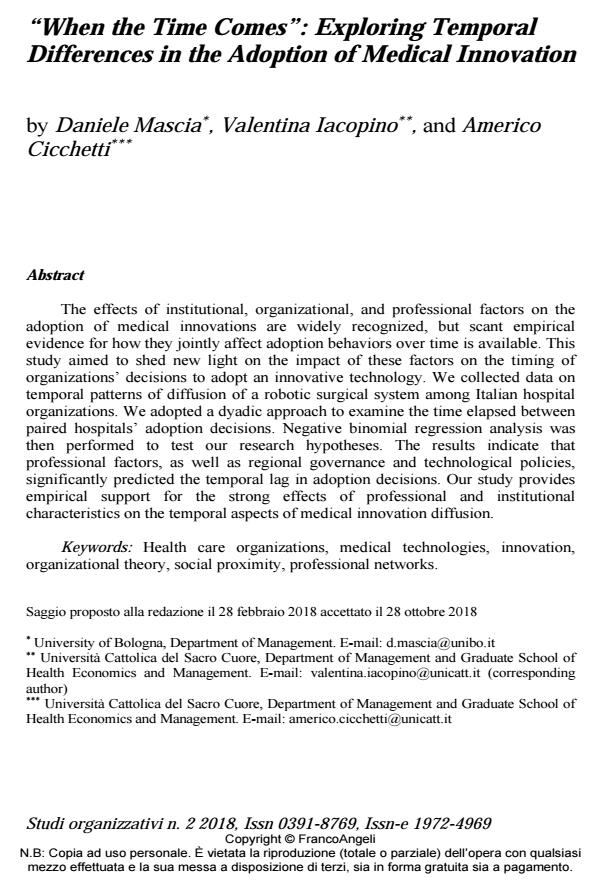"When the Time Comes": Exploring Temporal Differences in the Adoption of Medical Innovation
Journal title STUDI ORGANIZZATIVI
Author/s Daniele Mascia, Valentina Iacopino, Americo Cicchetti
Publishing Year 2019 Issue 2018/2
Language English Pages 26 P. 62-87 File size 581 KB
DOI 10.3280/SO2018-002003
DOI is like a bar code for intellectual property: to have more infomation
click here
Below, you can see the article first page
If you want to buy this article in PDF format, you can do it, following the instructions to buy download credits

FrancoAngeli is member of Publishers International Linking Association, Inc (PILA), a not-for-profit association which run the CrossRef service enabling links to and from online scholarly content.
The effects of institutional, organizational, and professional factors on the adoption of medical innovations are widely recognized, but scant empirical evidence for how they jointly affect adoption behaviors over time is available. This study aimed to shed new light on the impact of these factors on the timing of organizations’ decisions to adopt an innovative technology. We collected data on temporal patterns of diffusion of a robotic surgical system among Italian hospital organizations. We adopted a dyadic approach to examine the time elapsed between paired hospitals’ adoption decisions. Negative binomial regression analysis was then performed to test our research hypotheses. The results indicate that professional factors, as well as regional governance and technological policies, significantly predicted the temporal lag in adoption decisions. Our study provides empirical support for the strong effects of professional and institutional characteristics on the temporal aspects of medical innovation diffusion.
Keywords: Health care organizations, medical technologies, innovation, organizational theory, social proximity, professional networks.
Daniele Mascia, Valentina Iacopino, Americo Cicchetti, "When the Time Comes": Exploring Temporal Differences in the Adoption of Medical Innovation in "STUDI ORGANIZZATIVI " 2/2018, pp 62-87, DOI: 10.3280/SO2018-002003